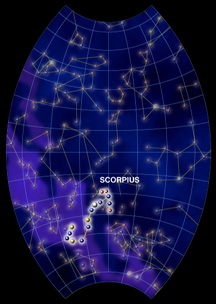The Constellation Scorpius, the Scorpion
Click on image for full size
Scorpius
Some constellations do not really look like their names. It takes a
lot of imagination to picture the stars of
Pegasus as a winged horse,
for example. But Scorpius really looks like a scorpion! It has a
long, curving tail, and snapping claws, just like the real arachnid.
The bright star
Antares marks the heart of the scorpion.
Did you know that stars are not all the same color? Some are blue,
some are yellow, and some are red. Antares is a star that is so
red, even your eye can see the difference. Antares is very bright
because it is a very big star (300 times as big as our Sun).
It was the scorpion's sting that killed the great hunter, Orion. So
these two enemies are placed far apart in the sky, to keep them out of
trouble. Orion is a bright constellation of winter, while Scorpius
crawls through the night sky in summer.
You might also be interested in:

How did life evolve on Earth? The answer to this question can help us understand our past and prepare for our future. Although evolution provides credible and reliable answers, polls show that many people turn away from science, seeking other explanations with which they are more comfortable.
...more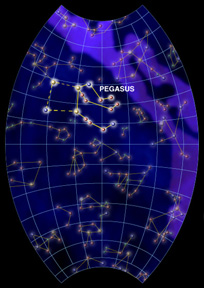
The constellation, Pegasus, is a winged horse. Only the front half of the horse is in the sky. Can you see a horse in the picture? Imagine it upside-down! Then you will see a body with a neck and two legs.
...more
What's in a Name: Greek for "Rival of Mars" (Ares is Greek for Mars). Sometimes Antares is mistaken for Mars when they are close together because both are red. Claim to Fame: Brightest star in the constellation
...more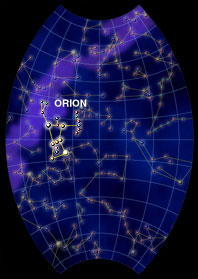
The constellation Orion is a hunter. He is really easy to find in the sky! Look for the three bright stars that make up his belt. From there, you can find one of his legs, which is the star Rigel. One
...more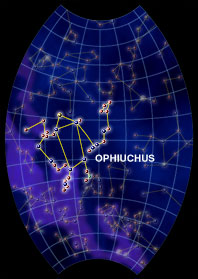
The constellation Ophiuchus is known as the Serpent Bearer. In Greek myth, he was the god of medicine. One day he killed a snake, but another serpent appeared and healed his friend with plants. Ophiuchus
...more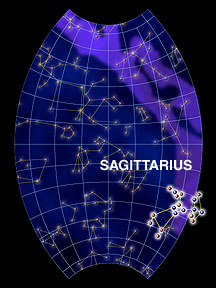
Sagittarius is a make-believe creature with the chest and head of a man and the body and legs of a horse. He is shooting his bow at the Scorpion, just next door. Sagittarius is big, but his stars are not
...more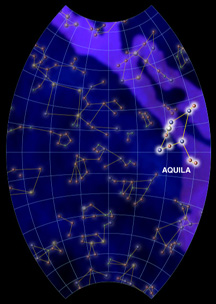
Aquila, the Eagle, is one of many beautiful birds in the night sky. (Can you name all the others? There are 6 more "real" birds and one mythical bird!) A straight line of three stars is part of the wings
...more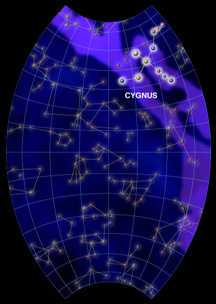
Cygnus, the Swan, looks like a big cross. The tail of the swan is marked by the bright star Deneb. The head of the swan is a star called Albireo, a star with a surprise! Three fainter stars cross the line
...more


